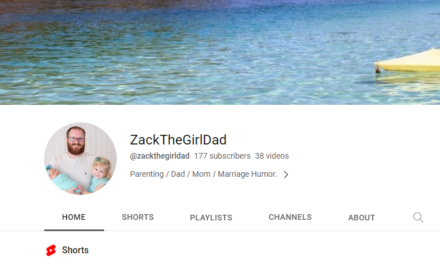Consulting usually tops the list of the earliest revenue sources for content entrepreneurs. It’s also the most profitable, according to The Tilt research. Even if it’s not part of your long-term strategy, consulting can provide the money to sustain your startup so you can grow the content business.
At Content Entrepreneur Expo, Jenny Magic, co-author of Change Fatigue: Flip Teams From Burnout to Buy-In and change consultant, shared how to cultivate consulting services in your content business.
As a content entrepreneur, Jenny notes, you’re already executing some of the components required in consulting – helping people address their problems and interests. However, unlike your content, which appeals to a target audience, consulting requires a more full-service or custom arrangement with your clients.
In addition to a consistent, more stable revenue, consulting can benefit other aspects of your content business. It helps you build authority and credibility and serves as an opportunity for fresh content and case studies.
Here are five things she says you should do to build a consulting practice:
1. Decide if consulting is a good fit: First, if you are employed elsewhere or have contractual relationships, read the employee handbook and your contracts. Ensure they don’t prohibit you from consulting in the parameters you plan to establish.
Second, ask yourself if you can handle constant adapting. Even if you offer the same or similar services every year, you need to have a pulse on your prospective clients’ changing markets and environments.
Third, determine if you are comfortable selling yourself and handling rejection. As a content entrepreneur, you put yourself in front of an audience. But if they don’t sign up for your newsletter or buy an online course, you don’t really feel the effect or even know about their rejection of your business. In consulting, you are putting your knowledge and expertise front and center before individuals. When they say no, you will see the rejection more personally. So, if you’re not OK with that (or willing to get OK with that), consulting isn’t a good choice.
2. Know what you’re selling: Consulting generally addresses four broad purposes:
- Capacity – Your fractional support adds bandwidth for your client.
- Skills – Your expertise trains their team.
- Strategy – Your advice changes their support.
- Assurance – Your plan promises an outcome.
However, know that consulting is about more than the outcome your clients want. You must explain your how because that’s the differentiator. Think about how your personality will infuse the work you’re going to do. By talking early on about who you are, what you think is important, and your approach to life, you’ll tell a story that’s stickier and helpful in delivering the desired outcomes.
3. Pick niche or specialization: Though some may think niches and specializations are the same or don’t matter, Jenny says they do. “Having one gives your message stickiness,” she says.
4. Make the case: To determine what your consulting practice should offer, go through this exercise:
- Write the problem statement.
- Detail the pain points related to it. How do prospective clients think about the problem?
- Identify the impacted stakeholders. You will likely sell to the boss rather than the people on the ground. By identifying the impacted stakeholders, you can help the buyers see your services as more than a promise to them but a promise to deliver on the problem they’re trying to solve.
- Detail the desired future state.
- Create a summary of the situation followed by the potential solutions.
Jenny cautions entrepreneurs not to mistake a willingness to talk to you about their pain as a willingness to invest in the solution. “The most common action is to wait and see and hope it goes away,” she says.
5. Recognize the financials: It’s much easier if your services fit into an existing budget line item than requiring them to add a new line to their budget because they’re unlikely to do the latter.
Develop a pricing structure that fits their existing structure well. For example, you could charge hourly, but if the client is used to working with the big consulting firms, they’ll likely expect a day rate fee.
Project pricing can work well for both you and the client as long as you establish a finite set of work in the beginning and don’t let project scope creep in.
Value-based pricing can work for engagements that involve cost savings or additional revenue. For example, a supply chain consultant who helps clients renegotiate contracts might charge a 1% fee.
You don’t have to pick one pricing strategy. Assess what works for your clients and your business.
But no matter what pricing strategy you implement for the long term, Jenny advises having a low-risk test project for clients to get your first dollar from them more quickly. “It’s usually a project-based price to offer as a quick win to understand the unique proposition of working with you,” she says, noting that assessments and benchmarks often work well because they give them something valuable to diagnose their problem.
Want to dive deeper into Jenny’s change management expertise? Get a copy of her book today.
About the author
Ann regularly combines words and strategy for B2B, B2C, and nonprofits, continuing to live up to her high school nickname, Editor Ann. An IABC Communicator of the Year and founder of G Force Communication, Ann coaches and trains professionals in all things content. Connect with her on LinkedIn and Twitter.










